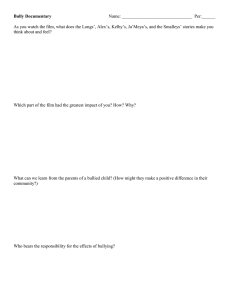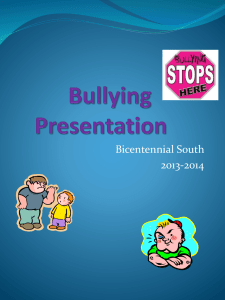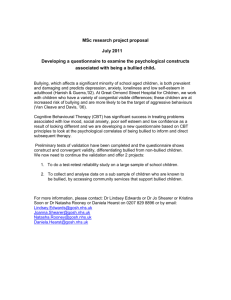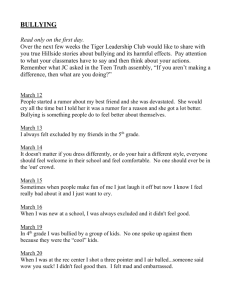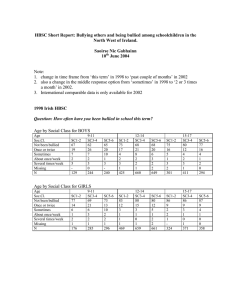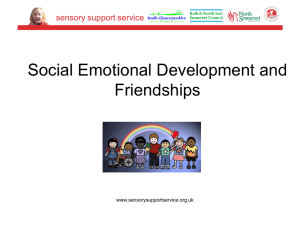Classroom Management that Creates Safe and Inclusive Learning
advertisement
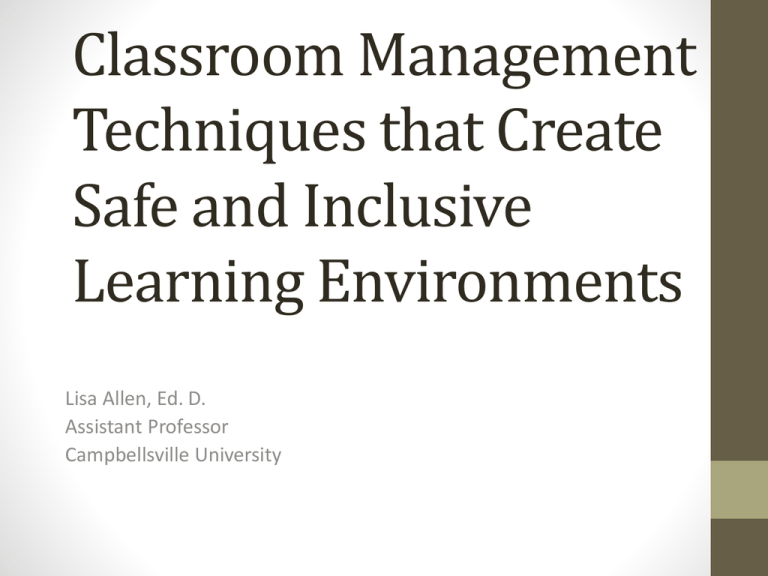
Classroom Management Techniques that Create Safe and Inclusive Learning Environments Lisa Allen, Ed. D. Assistant Professor Campbellsville University Classroom Management Defined Write a definition of classroom management that you feel clarifies its key intent, elements, and principles. Explain to a new teacher what classroom management is in terms of what he/she will be doing in the classroom— and why. The definition should help the new teacher develop an image of classroom management in action. Develop a metaphor, analogy, or visual symbol that you think represents and clarifies what’s important to understand about classroom management. Developing A Philosophy of Classroom Management Extent of the Problem Extent of the Problem • Discipline and violence rated most serious problem facing American public schools. Lack of financial support and discipline most serious problem facing today’s schools. Delta Kappa-Gallop Poll, 2008 • Fighting/violence/gangs cited as 4th most serious concern. Rose and Gallop, 2008 • Nonfatal crimes decreased 62 percent in 2007 from previous six years. • Threats have remained the same—eight percent of school population reported being threatened or injured with a weapon. • 25 percent of high school students report that drugs were made available to them. • 2007 Indicator of School Crime and Safety Report • • • • 18 percent principals/teachers report disrespect Nine percent report verbal abuse Two percent report widespread classroom disorder Eight percent secondary and four percent elementary report actual physical attack by student Bullying • National Institute of Child Health and Human Development report • One in five fifth through tenth graders report they bully classmates. • National Center for Educational Statistics indicate: • • • • • • 28 percent of students report being bullied in the past six months 53 percent have been bullied once or twice in a six month period. 25 percent said they were bullied once or twice a month. 11 percent reported being bullied once or twice a week. Eight percent report they are bullied daily. 79 percent report being bullied on school grounds. • Older students report less bullying. • Gay, lesbian, bisexual, and transgender students are bullied the most. Effective Teachers Research demonstrates that, “effective teachers appear to be effective with all students of all achievement levels regardless of the heterogeneity of their classes,” (Marzano, 2003). Prosocial Behavior Jeopardy Time Prosocial vs. Rewards and Punishment Methods of Classroom Management Prosocial Behavior Methods Rewards and Punishment Methods • Increased self esteem and self awareness • Acknowledges and validates student’s feelings • Larger investment of time for the teacher • Focuses on the well being of the child • Teacher models prosocial behavior in a safe, collaborative environment • Behavior problems are viewed as learning opportunities • Problem solving and social competence skills transfer into the world outside the classroom/school • Respects diverse cultures • Students who are able to maneuver this system feel successful • Effectively controls student behavior in the short term • Less time consuming • Focuses on the smooth running of the classroom • Teacher is dominant figure in classroom management • Behavior problems are viewed as interruptions • Often incongruent with child’s life outside of the classroom • Does not take into account diversity Four Knowledge and Skill Areas of Classroom Management 1. It should be based on current research and theory and students’ personal and psychological needs. 2. It depends on creating a positive learning environment of community support based on positive teacherstudent and peer relationships and positive relationships with students’ families. 3. It involves instructional excellence by utilizing strategies that meet the academic needs of individual students and the group. 4. It involves utilizing a wide range of counseling and behavioral methods that involve students in self monitoring and self correcting. Six Basic Assumptions about Classroom Management 1. It is about creating a safe, comfortable learning environment for all students. 2. It is directly linked to effective instruction. 3. It enhances student ownership, responsibility, and personal efficacy regarding their own learning. 4. It involves developing new behavior skills for working collaboratively. 5. It requires teachers to reflect on their values and beliefs regarding working with students. 6. It is both professional and personal integration of professional knowledge and skills with students’ individual needs. Factors that Influence Classroom Management Decisions • Teacher’s Cultural Background and Personal History Traditional—Teacher as authority figure, strict rules, clear and escalating responses to student behavior Liberal Progressive—Teacher involves students in decision making and problem solving Socially Critical—Student misbehavior viewed as a response to failure to meet their learning needs • Teacher’s Beliefs Regarding the Goals of Schooling Do you believe schools should teach morality and values? Do you believe it is possible to teach students content only? What morals and values may we be unconsciously teaching students? Activity 1: Group Discussion • What is the most common cause of student misbehavior? • When students misbehave, what type of teacher response or consequence is the most effective? Why? • As a parent or someone caring for children outside of a school setting, how do I usually respond to a behavior problem? • How do my current responses relate to those that were used with me when I was growing up? Resources Jones, V. & Jones, L. (2010). Comprehensive Classroom Management: Creating Communities of Support and Solving Problems. Upper Saddle River, New Jersey: Merrill. Lake, V. (2004). Ante up: Reconsidering classroom management philosophies so every child is a winner. Early Child Development and Care, 174(6), 565-574. Marzano, R. (2003). Classroom Management that Works. Alexandria, Virginia: Association for Supervision and Curriculum Development. Twain, N. (Producer). (1989). Lean on Me [Motion picture]. [With M. Freeman, B. Todd, & R. Guillaume]. United States: Warner Bros. Pictures.
